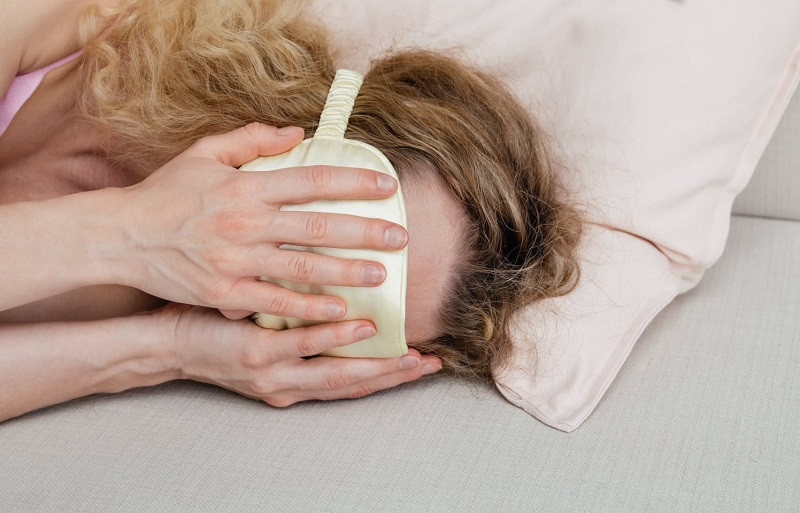Obsessive-compulsive disorder (OCD) has become one of the most common mental disorders over the years.
Commonly, when we think of OCD, we imagine a person who has the need to wash their hands excessively, or a person who has to turn the light switch on and off a certain number of times to feel calm.
However, OCD does not always present visible compulsions; sometimes obsessions can occur with mental compulsions or without compulsions. When this happens we could be talking about a type of OCD known as Pure Obsessive Compulsive Disorder.
What is an obsession and what is a compulsion?
We could define the concept of obsession as an intense and persistent thought in relation to a specific topic. Obsession can vary in intensity and frequency, it can range from a mild transient thought to a constant thought that encompasses all of a person’s attention and mental energy.
On the other hand we have the concept of compulsion, which we can define as a behavior that aims to neutralize the anxiety generated by obsession. Compulsion, like obsession, can range from brief and discreet behavior to very noticeable behavior.
For the cycle of obsession and compulsion to occur, there must be an event that introduces or precipitates the obsessive idea. It can be an everyday experience like a conversation about a specific topic.
Some Examples of Common Obsessions and Compulsions in people with OCD:
Characteristics of Pure Obsessive Compulsive Disorder
In this subtype of OCD, a precipitating event generates the obsession, but the compulsions are not observable to the people who live around the person affected with OCD. In these cases the obsession is very intense and can completely take over the person’s attention.
Let’s look at some example of Pure OCD:
What are the causes of pure OCD?
Like any other psychological/psychiatric condition, we could say that The causes that generate the appearance of OCD are multifactorial. but in essence we could expose some factors that influence the manifestation of this picture: the following elements.
1. Neurobiological factors
Recent studies have described alterations in serotonergic systems. Observing low serotonin production and therefore high activity of the orbitofrontal cortex.
Other studies associate the manifestation of OCD with alterations in the amygdala and the dorsolateral prefrontal cortex. These alterations would explain the deficits in tasks such as planning and working memory, as well as cognitive rigidity and high levels of anxiety in people diagnosed with OCD.
2. Family/systemic factors
Within family factors we can commonly find histories in which education is strict and sometimes rigid. Ambivalence can be observed on the part of paternal figures, with an extremely present and overprotective maternal figure being able to coexist with an emotionally distant or completely absent paternal figure.
It is common for patients with OCD to grow up in homes where strong religious and moral beliefs prevailed. Perfectionism and fear of error They are two elements inherited from a severe education. During adolescence, the sum of central rigid beliefs and introjected irrational ideas crystallize obsessive-compulsive behaviors and therefore OCD.
3. Cognitive/behavioral factors
In people diagnosed with OCD, it is common to observe a set of irrational central ideas regarding themselves and the world. Some beliefs are related to an incessant need to feel useful and productive, avoiding failure at all costs through very excessive measures or even the core belief of being in control of all things all the time. Ideas that are impossible to maintain over time and that, when they collide with reality, generate anxiety and depressive symptoms.
- You may be interested: “Dysfunctional perfectionism: causes, symptoms and treatment”
What does pure OCD look like in a person?
It is common to observe that The obsessive ideas that manifest themselves in pure OCD are related to questions or statements that are difficult to verify or answer. The vast majority of themes present in pure obsessions are religious, interpersonal or existential.
A person with pure OCD may begin to wonder if they are really in love with their partner, if they are fulfilling their life mission, or even if existence has meaning.
All of the above are extremely subjective questions in the face of which observable verification is difficult to happen, which causes the obsession to be intense and the compulsion to occur in a mental space (being alert to the thoughts one has or carrying out debates around the theme with oneself).
What is the treatment for pure OCD?
Psychotherapy and psychopharmacological treatment significantly improve the quality of life of people with OCD, since obsessions, rumination and anxiety decrease. In pharmacology, Selective Serotonin Reuptake Inhibitor (SSRI) drugs are used, while a good response has been observed when using Exposure Therapy with Response Prevention (EPR).
On the other hand, it is advisable to make certain changes in daily habits such as implementing an exercise routine, reducing or avoiding alcohol consumption, and integrating activities that allow socializing with other people.
Finally, the latest neurobiological studies indicate that reducing gluten consumption can improve the mental state of people affected with OCD and anxiety disorders, due to the relationship between gluten and anxiety disorders.











